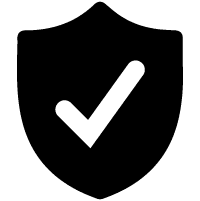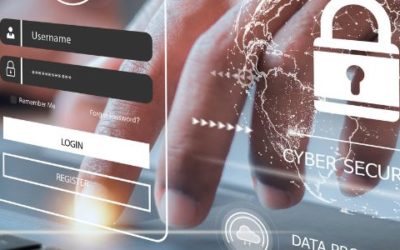How To Protect Your Online Accounts From Being Breached
Stolen login credentials have reached a high demand on the Dark Web. There’s a price you can pay for every account type out there, from online banking to social media accounts—and the price bad actors pay for these accounts tends to be quite affordable. For example, a breached social media account will sell for between $30 to $80 each.
With cloud services rapidly gaining popularity, there has been a significant increase in breached cloud accounts. According to IBM Security’s latest Report on the Cost of a Data Breach, compromised login credentials are now the primary cause of data breaches globally.
Having your personal or business cloud account compromised can be very costly. It can lead to a ransomware attack, compliance breach, identity theft, and more.
To make matters worse, users continue to adopt bad password habits, making it far too easy for cybercriminals.
For Example
- 34% of individuals admit to sharing passwords with their colleagues
- 44% of individuals reuse passwords across work and their personal accounts
- 49% of individuals keep their passwords in unprotected plain text documents
Cloud accounts face more risk of a data breach than ever before, but fortunately, there are several ways you can reduce the likelihood of having your online accounts breached.
How To Protect Your Online Accounts From Being Breached
 Use Multi-factor Authentication (MFA)
Use Multi-factor Authentication (MFA)
Multi-factor authentication (MFA) is the best method you can use to protect your cloud accounts. According to a study cited by Microsoft, MFA has proven to prevent approximately 99.9% of fraudulent sign-in attempts.
You significantly increase account security when you add the second requirement to a login, which is generally to input a code sent to your phone. In most cases, hackers will not have access to your cell phone or another device that will receive the MFA code. Thus, they won’t be able to bypass this step and access your account.
Although there is a brief inconvenience of using an additional step to log into your accounts, it’s more than worth it for the massive increase in security it provides.
 Use a Password Manager
Use a Password Manager
Criminals obtain user passwords easily when users store them in unsecured ways. This includes storing passwords in unprotected Word or Excel documents or contact applications on their PC or cell phone.
Using a password manager will provide you with a convenient place to safely store all your passwords in an encrypted and secured vault. Plus, you’ll only need to remember one strong master password to access all your passwords.
Password managers can also autofill all your passwords in many different browsers, providing a convenient way to access your accounts across devices securely.
 Adjust & Review Security & Privacy Settings
Adjust & Review Security & Privacy Settings
Have you spent time browsing the security settings in your cloud tools? One common cause of cloud account breaches is due to misconfiguration. This is when security settings aren’t properly set up to protect an account.
You don’t want to leave SaaS security settings at defaults, as these may not provide enough protection for your accounts. You should review and adjust your cloud application security settings to ensure your account is properly secured.
 Use Leaked Password Alerts in Your Browser
Use Leaked Password Alerts in Your Browser
Unfortunately, you can have astounding password security yet still manage to have your passwords compromised. This may happen when a retailer or cloud service you use has its master database of usernames and passwords exposed and data stolen.
When this occurs, those leaked passwords can quickly end up for sale on the Dark Web without you even knowing it.
Being a prevalent problem, browsers like Edge and Chrome have added leaked password alert capabilities. So, any passwords saved in the browser will be monitored, and if any are identified as leaked, you’ll receive an alert when you use it.
Look for this in the password area of your browser, as you may have to enable it. This can help you know as soon as possible about a leaked password so that you can change it.
 Don’t Enter Passwords on Public Wi-fi
Don’t Enter Passwords on Public Wi-fi
When on public Wi-Fi, you should always assume your traffic is being monitored. Hackers favor hanging out on public hot spots in airports, coffee shops, restaurants, and other places to gather sensitive data, such as login credentials.
When connected to public Wi-Fi, never enter a password, credit card number, or any other sensitive information. You should either turn off Wi-Fi and use your phone’s wireless carrier connection or use a virtual private network (VPN) app to encrypt the connection.
 Use Good Device Security
Use Good Device Security
If a bad actor breaches your device with malware, they can often gain access to your accounts without a password. Just think about all the apps you can open and already be logged into on your devices.
To prevent an online account breach through one of your devices, ensure you have strong device security.
Best practices include:
- Antivirus/anti-malware
- Up-to-date software and OS
- Phishing protection (ie: email filtering/DNS filtering)
How To Protect Your Online Accounts From Being Breached
Looking For Cloud Account Security & Password Solutions?
Don’t leave your online accounts at risk. Our cybersecurity experts can help you review your current cloud account security and provide helpful recommendations to safeguard your accounts.
You might also like
The 5 Symptoms of Bad I.T. Plaguing Your Business
Welcome to the Network Computer Pros technology clinic, where we diagnose and treat the I.T....
IT Billing Model: 6 Major Benefits of Fixed-Rate Services
Managed IT Services offer significant advantages over traditional hourly billing for businesses in...
Latest LastPass Scam: Everything you should know
Understanding and Protecting Yourself from the Latest LastPass Scam After a sophisticated...



